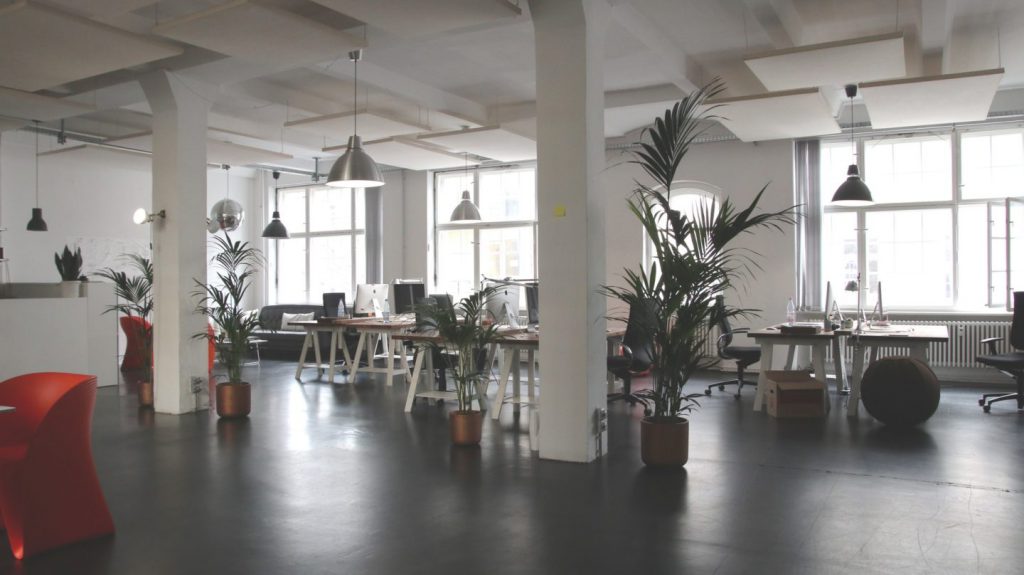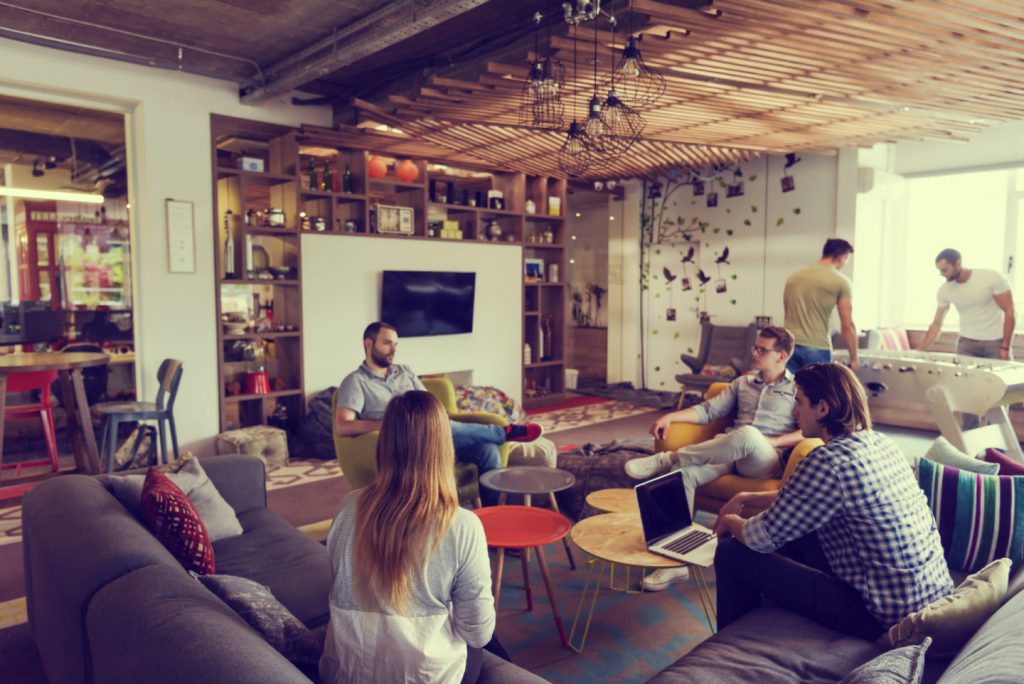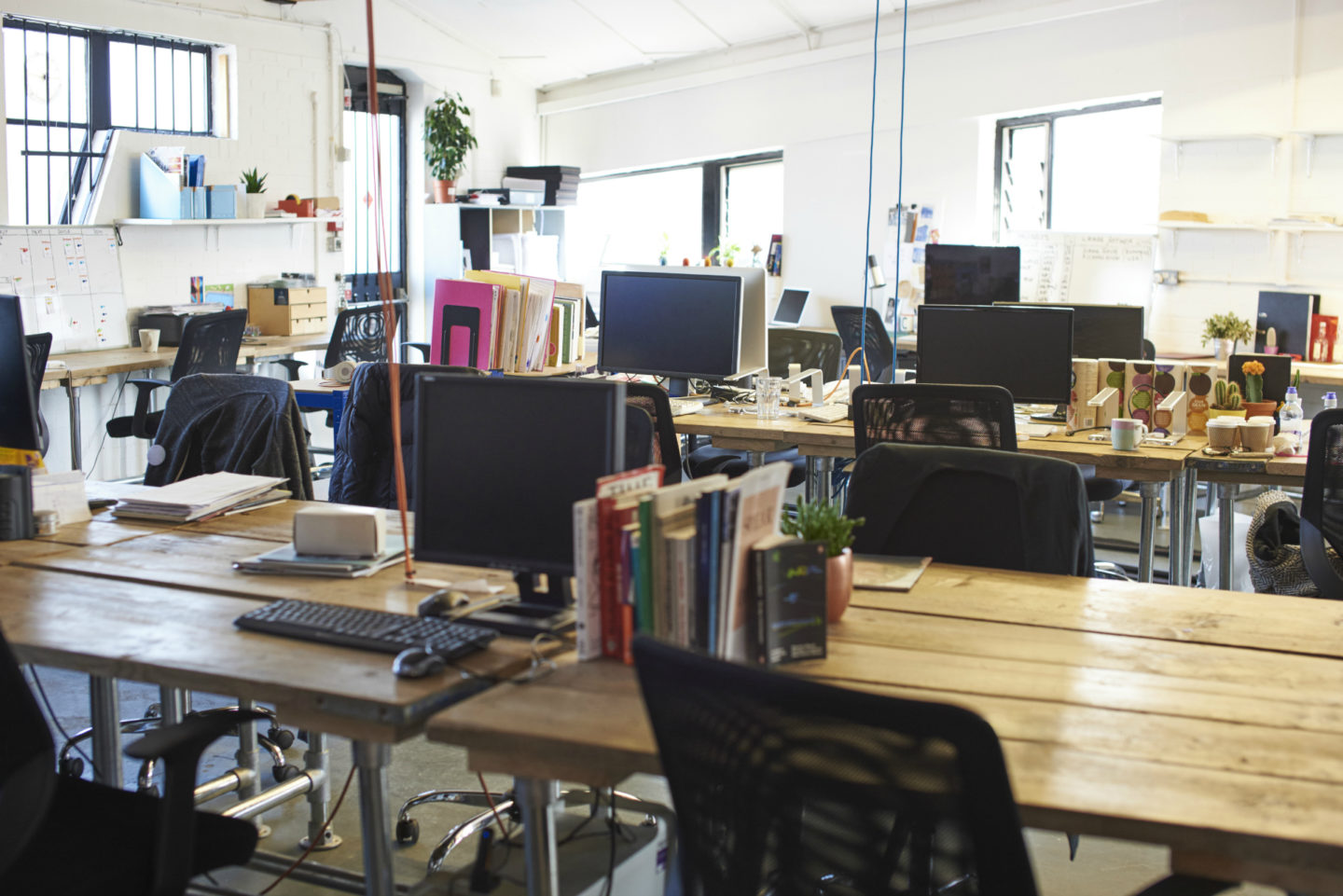The history of the office is a surprisingly storied one. Though modern cubicles and desktop working may seem more prevalent than ever in the modern world, the idea of an indoor communal workspace has been around for centuries.
The concept of a working space for administrative roles can be traced back as far as ancient Rome, where toga-draped office workers managed food supplies for the Empire. More formal business offices, the ones we recognise today, started to first appear in the early 18th century in Western Europe.
As with most architectural spaces, designs and styles for the office space has changed through the ages. Discover the history of the office below.

Offices through the ages
From private cubicles for every office worker to collaborative, open-plan working – the office space has had many guises over the years.
The first office
The first office building threw open its doors in 1726. The Old Admiralty Office handled the administration of the Royal Navy, managing and organising the expansion of trade as part of the growing British Empire. This office space included several meeting rooms – as well as the Admiralty Board Room – room styles you’ll still find in many office blocks today.
The rise of Taylorism
The design of most office spaces throughout the early 20th century was influenced by ‘Taylorism,’ a working method that sought to maximise the efficiency of office workers.
Workers would sit shoulder to shoulder at endless rows of desks, while managers sat in their private encircling offices where they could keep an eye on their staff. While popular at the time, this layout focused exclusively on productivity, taking away personal and social requirements.
Open plan history of the office
Offices became more spacious in 1939 with The Johnson Wax company opening the first open-plan office. While the purpose was to help increase productivity, the interior layout also included bright lights and warm spaces for a more comfortable atmosphere.
Burolandschaft
Social interaction and engagement only improved with the introduction of the Burolandschaft style. This German concept literally means ‘office landscape,’ and became popular in the early 1960s.
Burolandschaft took a more relaxed approach to office layouts, focussing on the daily needs of the workforce. Grouping desks and teams together in an unregimented way made the workplace a social space, promoting collaboration between departments and colleagues.
Cubicles
Focus on profitability and productivity crept back in during the 1980s, which saw the introduction of the office cubicle. Plyboard walls often separated individual workers, placing each employee in a personal cubicle-style space.
Cubicle designed office spaces sometimes led to a decrease in collaborative working and the social working environment of the open-plan offices that had preceded it, often with team morale suffering as a result.
Technology
The modern history of the office has undergone rapid change, mostly due to the arrival of digital technology in the workspace.
The introduction of the laptop means staff are more mobile. Being able to move around the office has led to many workplaces embracing ‘hot-desking’ with staff choosing where they sit depending on the requirements of the business or an employee’s individual workload.
Remote working also offers flexibility for workers, allowing them to work from coffee shops or at home. This is perfect for parents with young children, as it means they can fit their working hours around their children.

Open plan office or cubicle?
Each office can individually choose their own layout, but arguably open-plan offices are the better option over cubicles.
Studies show that working in an open-plan office has a positive impact on the health and mental wellbeing of office workers. It gives workers a chance to converse and work together, creating the feeling of family in the workspace. If the wellbeing of your workforce is put at the forefront, then your productivity levels will rise too.
For more advice on office etiquette head back to our main blog.







